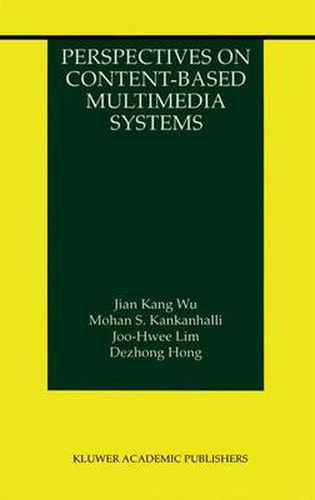Readings Newsletter
Become a Readings Member to make your shopping experience even easier.
Sign in or sign up for free!
You’re not far away from qualifying for FREE standard shipping within Australia
You’ve qualified for FREE standard shipping within Australia
The cart is loading…






This title is printed to order. This book may have been self-published. If so, we cannot guarantee the quality of the content. In the main most books will have gone through the editing process however some may not. We therefore suggest that you be aware of this before ordering this book. If in doubt check either the author or publisher’s details as we are unable to accept any returns unless they are faulty. Please contact us if you have any questions.
Multimedia data comprising of images, audio and video is becoming increasingly common. The decreasing costs of consumer electronic devices such as digital cameras and digital camcorders, along with the ease of transportation facilitated by the Internet, has lead to a phenomenal rise in the amount of multimedia data generated and distributed. Given that this trend of increased use of multimedia data is likely to accelerate, there is an urgent need for providing a clear means of capturing, storing, indexing, retrieving, analyzing and summarizing such data.
Content-based access to multimedia data is of primary importance since it is the natural way by which human beings interact with such information. To facilitate the content-based access of multimedia information, the first step is to derive feature measures from these data so that a feature space representation of the data content can be formed. This can subsequently allow for mapping the feature space to the symbol space (semantics) either automatically or through human intervention. Thus, signal to symbol mapping, useful for any practical system, can be successfully achieved.
Perspectives on Content-Based Multimedia Systems provides a comprehensive set of techniques to tackle these important issues. This book offers detailed solutions to a wide range of practical problems in building real systems by providing specifics of three systems built by the authors. While providing a systems focus, it also equips the reader with a keen understanding of the fundamental issues, including a formalism for content-based multimedia database systems, multimedia feature extraction, object-based techniques, signature-based techniques and fuzzy retrieval techniques. The performance evaluation issues of practical systems is also explained. This book brings together essential elements of building a content-based multimedia database system in a way that makes them accessible to practitioners in computer science and electrical engineering. It can also serve as a textbook for graduate-level courses.
$9.00 standard shipping within Australia
FREE standard shipping within Australia for orders over $100.00
Express & International shipping calculated at checkout
This title is printed to order. This book may have been self-published. If so, we cannot guarantee the quality of the content. In the main most books will have gone through the editing process however some may not. We therefore suggest that you be aware of this before ordering this book. If in doubt check either the author or publisher’s details as we are unable to accept any returns unless they are faulty. Please contact us if you have any questions.
Multimedia data comprising of images, audio and video is becoming increasingly common. The decreasing costs of consumer electronic devices such as digital cameras and digital camcorders, along with the ease of transportation facilitated by the Internet, has lead to a phenomenal rise in the amount of multimedia data generated and distributed. Given that this trend of increased use of multimedia data is likely to accelerate, there is an urgent need for providing a clear means of capturing, storing, indexing, retrieving, analyzing and summarizing such data.
Content-based access to multimedia data is of primary importance since it is the natural way by which human beings interact with such information. To facilitate the content-based access of multimedia information, the first step is to derive feature measures from these data so that a feature space representation of the data content can be formed. This can subsequently allow for mapping the feature space to the symbol space (semantics) either automatically or through human intervention. Thus, signal to symbol mapping, useful for any practical system, can be successfully achieved.
Perspectives on Content-Based Multimedia Systems provides a comprehensive set of techniques to tackle these important issues. This book offers detailed solutions to a wide range of practical problems in building real systems by providing specifics of three systems built by the authors. While providing a systems focus, it also equips the reader with a keen understanding of the fundamental issues, including a formalism for content-based multimedia database systems, multimedia feature extraction, object-based techniques, signature-based techniques and fuzzy retrieval techniques. The performance evaluation issues of practical systems is also explained. This book brings together essential elements of building a content-based multimedia database system in a way that makes them accessible to practitioners in computer science and electrical engineering. It can also serve as a textbook for graduate-level courses.